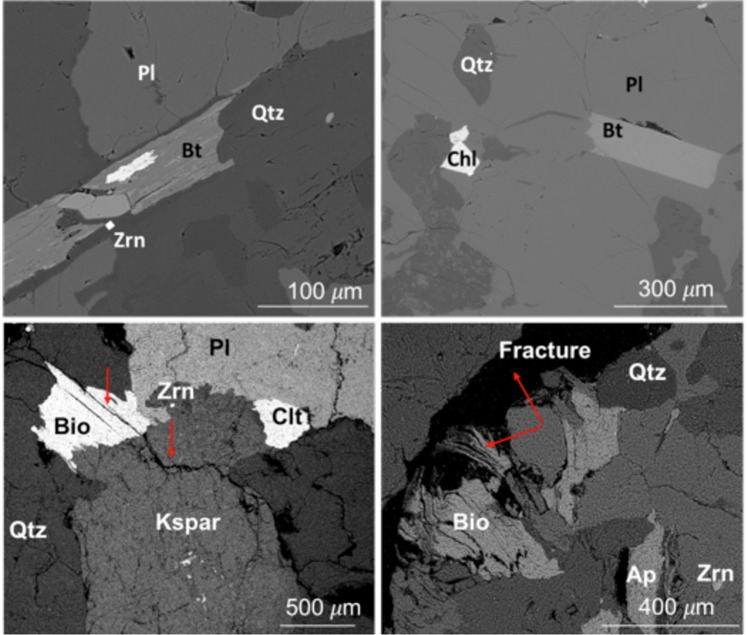Figure 6.
Weathering-induced micro-fracturing. As biotite weathers, Fe(II) is oxidized to Fe(III), causing expansion and weathering-induced fractures. The top two images show a typical back-scattered electron microscope image of the protolith at 50 m depth with no observed cracking around biotite (Bt). The bottom two images from weathered/fractured bedrock at 32 m depth show oxidized biotite (Bio) that has expanded along cleavage planes (dark black parallel lines, marked by red arrow, inside Bio grain) and cracking in neighboring grains (red arrow in potassium feldspar (Kspar) grain). The expansion of biotite is sometimes accommodated in the rock by larger microfractures as shown in bottom right image. These microfractures open the rock to meteoric fluids and enhance weathering. (Labels: Clt or Chl = chlorite; Qtz = quartz; Pl = plagioclase; Ap = apatite; Zrn = zircon).

